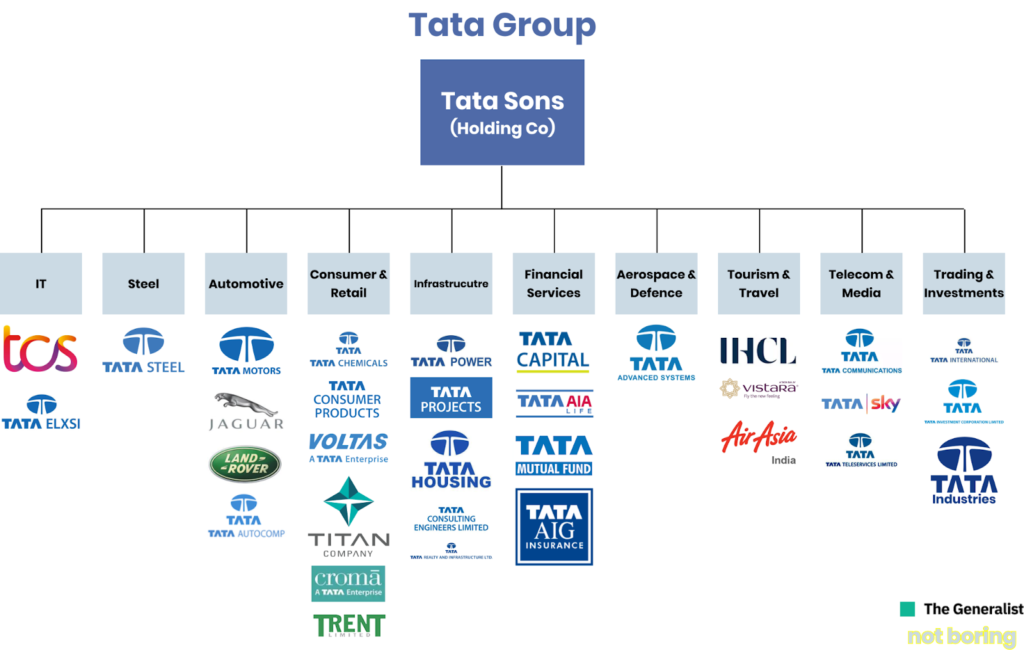The Incredible Journey of Reliance Industries: How It Became India’s Biggest Company Reliance Industries is one of India’s most successful and influential companies, dominating sectors like petrochemicals, retail, telecom, and digital services. But its journey began with a single man’s vision—Dhirubhai Ambani—who transformed a small textile business into a global empire. Today, Reliance is India’s most valuable company, with a market capitalization of over $200 billion. But how did it all start? How did Reliance grow from a small trading business to an industry leader? This blog will take you through the story of Reliance Industries, its early struggles, massive successes, and key business strategies, giving you valuable insights to apply to your own entrepreneurial journey. The Beginning: How Dhirubhai Ambani Started Reliance 1. Early Life of Dhirubhai Ambani At a young age, Dhirubhai moved to Aden (now Yemen), where he worked as a gas station attendant and later as a clerk in a trading firm. Here, he learned business strategies, trade, and the power of global markets. 2. The Birth of Reliance in 1966 The Growth Phase: How Reliance Expanded Rapidly 3. The First Major Breakthrough: The IPO in 1977 Dhirubhai Ambani believed that public participation was crucial for business expansion. This was a revolutionary step, as most Indian businesses were run by traditional business families who avoided public investment. 4. Diversification into Petrochemicals Realizing that polyester and textiles depended on raw materials like petrochemicals, Dhirubhai backward-integrated the business. 5. Entry into Oil & Gas Industry Dhirubhai Ambani’s vision extended beyond textiles and petrochemicals. The Next Generation: Mukesh Ambani’s Leadership 6. Mukesh vs. Anil Ambani – The Split of Reliance After Dhirubhai Ambani passed away in 2002, a family dispute between his sons—Mukesh Ambani and Anil Ambani—led to the split of Reliance. 7. The Rise of Reliance Under Mukesh Ambani Under Mukesh Ambani’s leadership, Reliance expanded aggressively into new sectors: ✅ Reliance Retail (2006) – Today, it’s India’s largest retailer, with over 18,000 stores.✅ Jio Telecom (2016) – The game-changer that disrupted the Indian telecom industry with free 4G data and cheap internet plans.✅ Reliance Digital & E-commerce – Competing with Amazon and Flipkart in India’s growing e-commerce market.✅ Green Energy (2021) – Investing billions in solar and hydrogen energy for a sustainable future. Key Strategies That Made Reliance a Giant Reliance’s success is based on powerful business strategies that any entrepreneur can learn from: 1. Vertical Integration (Owning the Entire Supply Chain) 2. Innovation and Market Disruption 3. Massive Investment in Infrastructure 4. Strong Customer-Centric Approach Lessons Entrepreneurs Can Learn from Reliance If you’re an aspiring entrepreneur, here are key lessons from Reliance’s success: ✔ Think Big: Dhirubhai Ambani started small but always aimed high.✔ Take Calculated Risks: Reliance entered multiple industries at the right time.✔ Focus on Innovation: Jio and Reliance Retail disrupted markets.✔ Expand Aggressively: Reliance dominates every industry it enters.✔ Customer First: Reliance products are always built with the customer in mind. Conclusion: The Future of Reliance Industries Reliance Industries is now a global conglomerate with interests in oil, retail, telecom, and green energy. Under Mukesh Ambani’s leadership, Reliance is focusing on:✅ 5G and digital services to dominate India’s internet space.✅ Renewable energy investments for a sustainable future.✅ Expanding Jio and Reliance Retail to international markets. The story of Reliance is a true inspiration for entrepreneurs. It shows that with vision, strategy, and innovation, you can build an empire from scratch. Read The Legacy of Tata Group: How It Became India’s Most Respected Conglomerate, The Role of Entrepreneurship in Wealth Building, Rich and wealthy; the difference Check out Official Website of Reliance, Forbes on Reliance Industries



